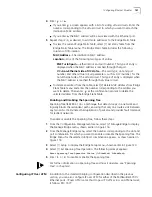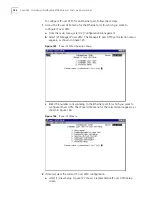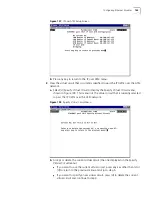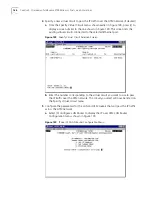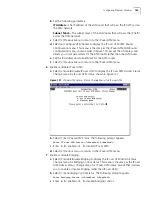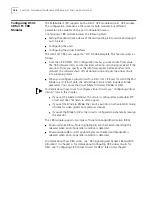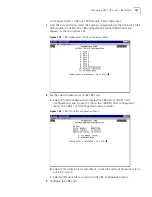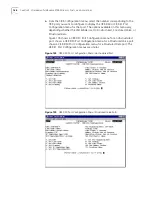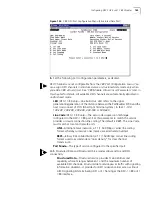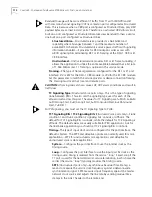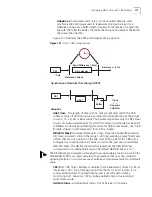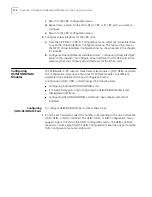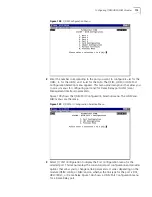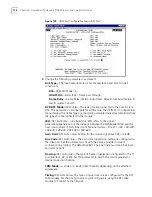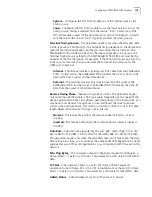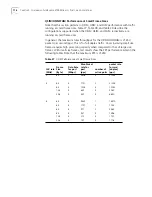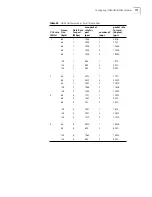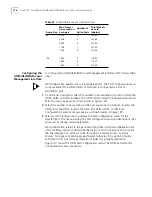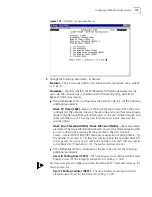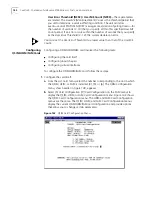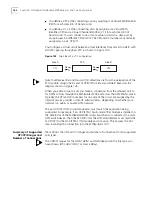
Configuring QSIM/HSIM/FAM Modules
175
System
—Configures the DS1 FAM module to use the internal clock as the
timing source.
Loop
—Configures the DS1 FAM module to use the input port Rx clock as the
timing source; timing is received from the service “loop.” Select Loop if the
DS1 UNI module is used for the network/carrier service termination, in which
case the carrier (the service “loop”) typically provides the timing source.
Terminal Timing Source
—This parameter applies only when the attached cable
is DCE type cable. The setting for the Terminal Timing depends on the nature and
speed of the device application, but the typical configuration is Internal—the
PathBuilder S700 provides the clock for the device application. In any case, the
Terminal Timing Source setting for the PathBuilder S700 QSIM port must be the
opposite of that for the device. For example, if the Terminal Timing Source for the
router is set to Internal, then you must set the Terminal Timing Source for the
QSIM port to External.
Internal
—The terminal receives clocking over DCE cable
from
the PathBuilder
S700. In other words, the PathBuilder S700 provides the clock to clock in the
data traffic from a router or other data device.
External
—The terminal provides port clocking over the DCE cable
to
the
PathBuilder S700. In other words, The PathBuilder S700 accepts the clock for
data from the router or other data device.
Receive Timing Phase
—Receive timing phase control. This parameter applies
only when the attached cable is DCE type cable. Depending on the speed of the
device application and the clock phases, particularly those of the return clock, you
may have to set
Receive Timing Phase
to
Inverted
(invert the clock) to ensure
correct clock and data phase. This option is used most often to correct for cable
length delays when
Terminal Timing
is set to
Internal
.
Normal
—The receive timing from the remote endpoint (node) is normal
clocking.
Inverted
—The receive timing from the remote endpoint (node) is inverted
clocking.
Data Rate
—The data rate supported by the port:
64K
,
128K
,
256K
,
512K
,
1M
,
6M
, or
8M
for the QSIM;
1.5M
to
20M
for the HSIM;
64K
to
1.5M
for the FAM.
This parameter applies only when the attached cable is DCE type cable. The
Data
Rate
setting also allows you to optimize the entire WAN ATM application by traffic
engineering your ATM access applications so as to maintain traffic flow across the
network.
Min. Flag Bytes
—The minimum number of flag bytes required to distinguish a
frame. Select
1
(1 byte) or
2
(2 bytes). This parameter is valid only for HDLC/SDLC
data.
FCS Size
—The number of bytes to use for FCS (Frame Check Sequence)
calculation for each frame. FRC is the CRC remainder sent at the end of a frame.
Select
1
(2 bytes) or
2
(4 bytes). This parameter is valid only for HDLC/SDLC data.
Admin Status
—Administrative status:
Out of Service
or
In Service
.
Summary of Contents for 3C63400-3AC-C - PathBuilder S700 Switch
Page 14: ...xiv CHAPTER SUPPLEMENTARY REGULATORY INFORMATION ...
Page 18: ...4 ABOUT THIS GUIDE ...
Page 28: ...14 CHAPTER 1 SYSTEM DESCRIPTION ...
Page 88: ...74 CHAPTER 3 GETTING STARTED ...
Page 260: ...246 CHAPTER 6 PATHBUILDER S700 DIAGNOSTICS AND PERFORMANCE MONITORING ...
Page 270: ...256 INDEX ...

